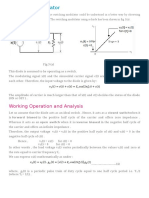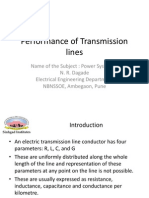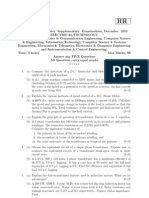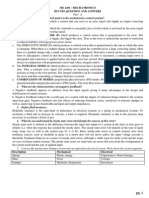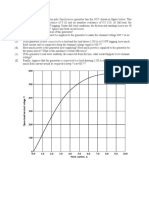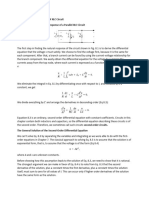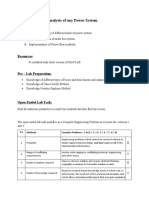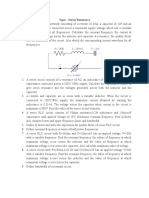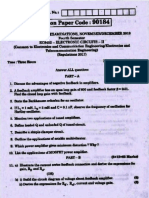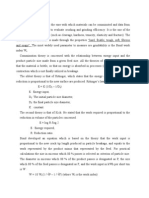0% found this document useful (0 votes)
251 views18 pagesUnit-I - SignalFlow Graph
The document is a presentation on signal flow graphs. It begins with objectives which include an introduction to signal flow graphs and their definitions, terminologies, and modeling capabilities. It then discusses the fundamentals of signal flow graphs including how to represent systems of equations using nodes and branches. Several key terminologies are defined such as input/output nodes, paths, gains. Mason's rule for reducing a signal flow graph to a transfer function using a single formula is presented. Finally, examples are given to demonstrate how to apply Mason's rule to calculate transfer functions from given signal flow graphs.
Uploaded by
venkkatesh57Copyright
© © All Rights Reserved
We take content rights seriously. If you suspect this is your content, claim it here.
Available Formats
Download as PPTX, PDF, TXT or read online on Scribd
0% found this document useful (0 votes)
251 views18 pagesUnit-I - SignalFlow Graph
The document is a presentation on signal flow graphs. It begins with objectives which include an introduction to signal flow graphs and their definitions, terminologies, and modeling capabilities. It then discusses the fundamentals of signal flow graphs including how to represent systems of equations using nodes and branches. Several key terminologies are defined such as input/output nodes, paths, gains. Mason's rule for reducing a signal flow graph to a transfer function using a single formula is presented. Finally, examples are given to demonstrate how to apply Mason's rule to calculate transfer functions from given signal flow graphs.
Uploaded by
venkkatesh57Copyright
© © All Rights Reserved
We take content rights seriously. If you suspect this is your content, claim it here.
Available Formats
Download as PPTX, PDF, TXT or read online on Scribd
/ 18

